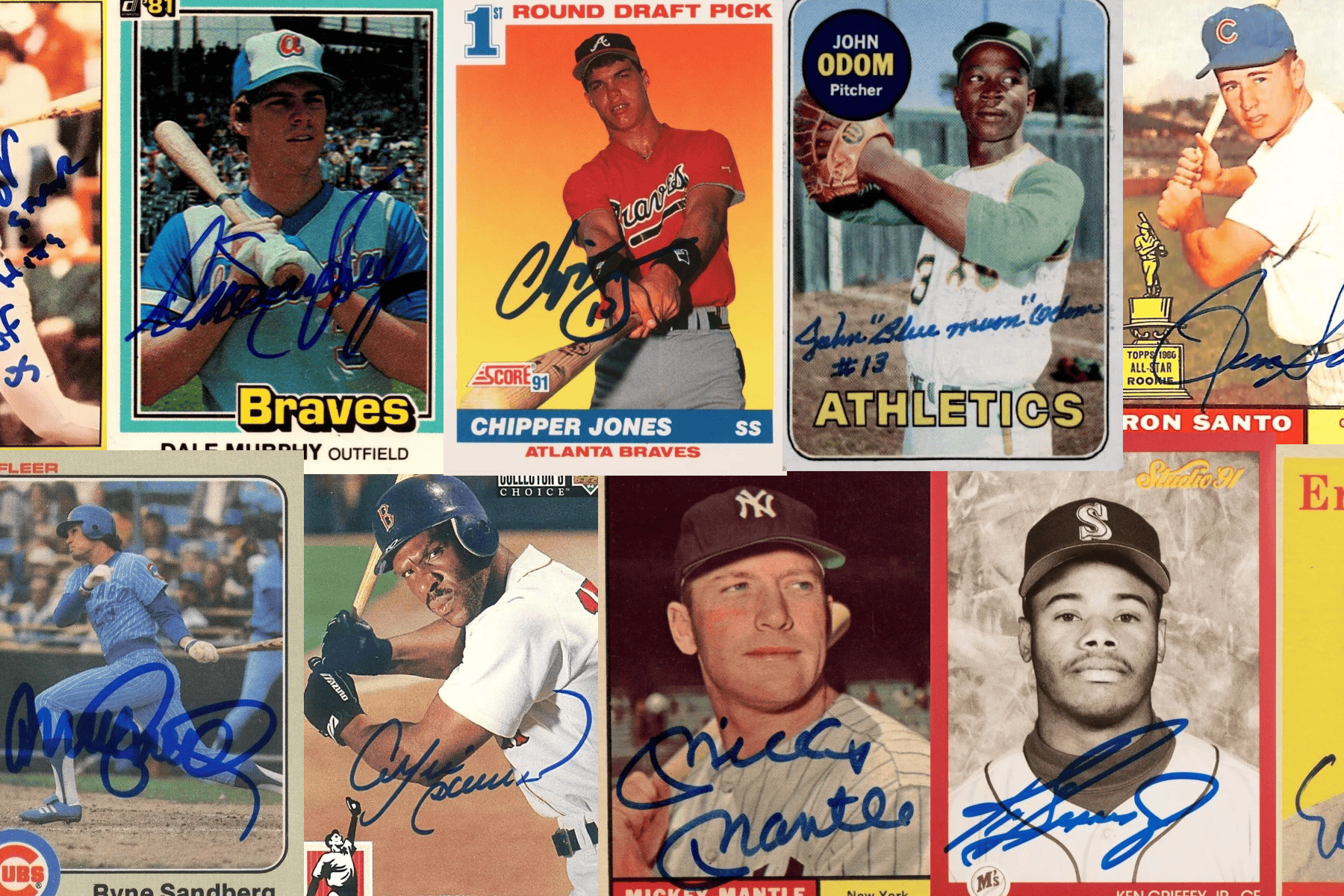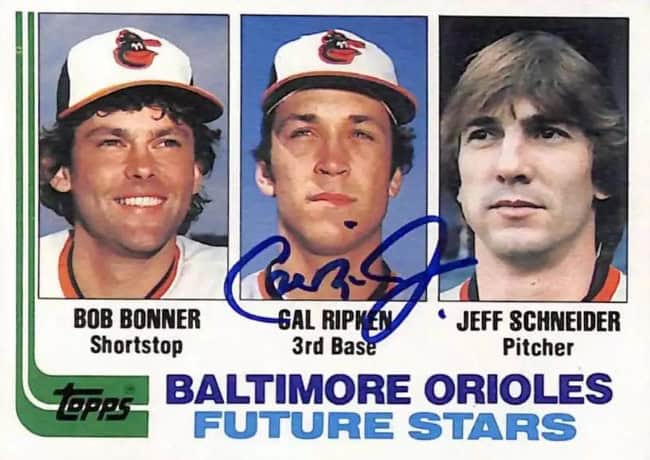
Choosing and prepping a baseball card for an autograph is a crucial step in enhancing the value and appeal of your collectible. Autographed baseball cards can significantly elevate the significance of a card, whether you intend to keep it or sell it.
In this article, we’ll explore the best practices for preparing your baseball card for an autograph, from selecting the right card to choosing the most suitable pens. We’ll also cover how to prep the card with baby powder or an eraser, to help the signature adhere to the card.
Whether you’re adding a personal touch to your collection or preparing a card for authentication and sale, understanding these essentials will help you achieve the best possible results.
How to Choose a Card for Autographs
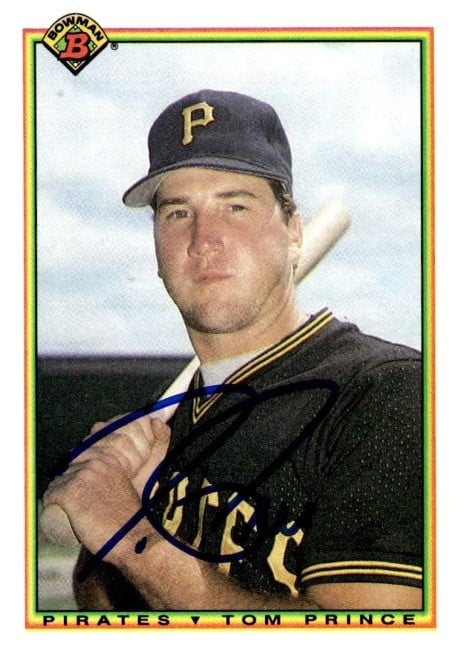
Choosing the right baseball card for an autograph is crucial to ensuring that the signature is both aesthetically pleasing and retains its value. When selecting a card, the first consideration should be the overall design, particularly the placement of key elements like the player’s face, text, and team logos. Ideally, you want to avoid having the autograph cross over the player’s face or important text, detracting from the card’s visual appeal. Cards with ample open space, such as those with large, clear areas in the background or foreground, are usually the best choices for autographs.
Another important factor is the color and contrast of the card’s background and the player’s jersey:
Dark backgrounds or dark-colored jerseys can make it difficult for a signature to stand out, especially if the pen used has a similar hue. In such cases, opting for a lighter-colored pen, like silver or white, can help the autograph pop against the dark surface.
Conversely, on cards with lighter backgrounds, a darker pen, such as black or blue, will create a sharp, easily readable signature. This attention to contrast ensures that the autograph is both visible and impactful, enhancing the card’s overall appearance.
Best Pens for Autographed Baseball Cards
Marker Pens
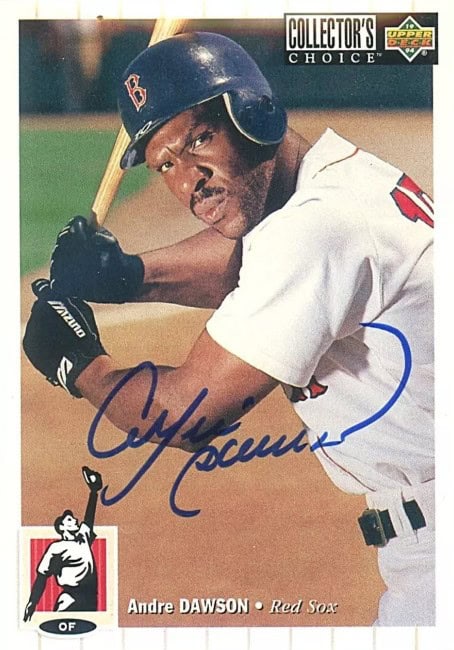
Sharpie
Sharpie’s widespread availability and reputation for durability have made it the go-to choice. Known for its permanent markers, Sharpie offers a variety of colors and tip sizes that are ideal for signing glossy surfaces like baseball cards. The ink dries quickly, minimizing the risk of smudging, and remains vibrant over time, ensuring the autograph stays crisp and legible for years.
Staedtler
Fine liner pens are Staedtler’s specialty. They allow for intricate and neat signatures even on small or detailed parts of the card. The pens use archival-quality ink, which is resistant to fading and water, making them perfect for preserving the integrity of the autograph.
Paint Pens
Posca
Posca paint pens have gained significant popularity in the autographing world, especially for baseball cards, due to their unique ability to produce bold, opaque signatures on a variety of surfaces. Unlike traditional ink-based pens, Posca paint pens use water-based pigment ink, which delivers a vibrant, paint-like finish that stands out against glossy or matte baseball cards. The opacity and color intensity provided by Posca pens allow for striking, high-contrast autographs that are particularly appealing to collectors who value the visual impact of a signature.
DecoColor
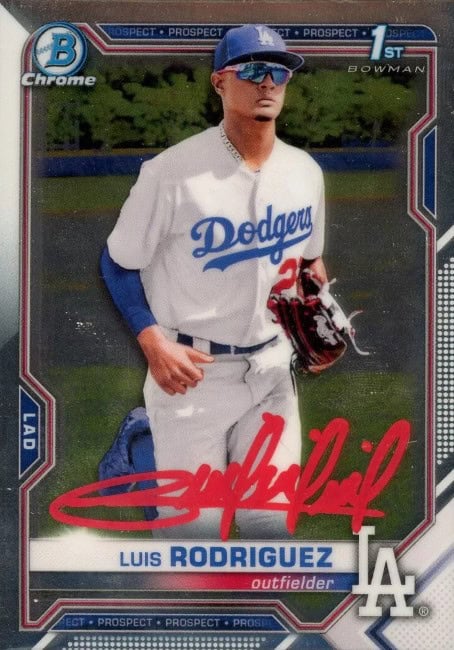
Decocolor paint markers produce bold, vibrant signatures that stand out on baseball cards. These markers use an oil-based paint, which adheres well to a variety of surfaces, including the glossy finishes common on baseball cards. The paint dries to a smooth, opaque finish.
One of the primary reasons collectors choose Decocolor markers for autographed baseball cards is their wide range of color options. There are over 30 color choices, allowing for a wide range of customization beyond silver and gold. Decocolor markers are available in multiple tip sizes and are also on the lower end of pricing.
Choosing the Right Color for Autographs
Blue is considered the industry standard for autographed baseball cards. This is for several key reasons. Blue ink offers:
- Balance between visibility and contrast, making signatures pop
- High resistance to fading
- Classic, timeless look
Black ink can offer a striking contrast, though it’s generally less preferred due to its tendency to fade more quickly than blue.
Pens to Avoid for Autographed Baseball Cards
Ballpoint Pens
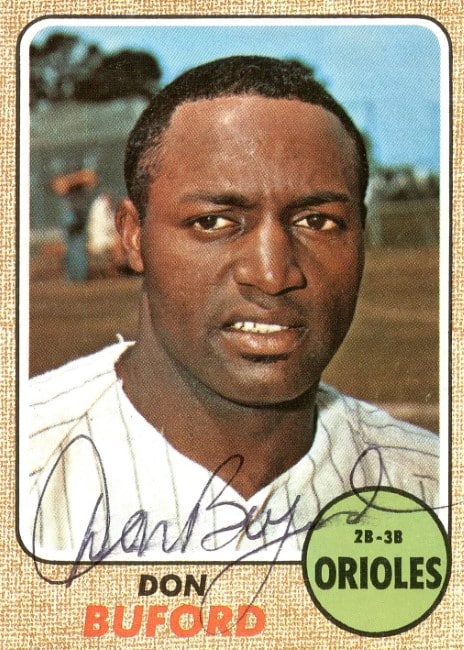
Ballpoint pens are a poor choice for autographed baseball cards due to several key drawbacks. The ink in ballpoint pens tends to be thinner and less vibrant compared to markers or paint pens, resulting in signatures that can appear faint, uneven, or even streaky, especially on glossy surfaces. Additionally, ballpoint pens require more pressure to write, which can lead to indentations or even damage to the card’s surface. This can significantly reduce the aesthetic appeal and value of the card. Over time, ballpoint ink is also prone to fading, making the autograph less durable and harder to preserve in the long run.
Despite these drawbacks, ballpoint pens were very common for autographs in the past, largely because they were more readily available and widely used in everyday life. Before the introduction of paint pens and markers, ballpoint pens were one of the few practical options for signing baseball cards. Ballpoint pens were used out of necessity rather than preference; today, they’re considered an option of last resort. If Mike Trout is walking by and nobody has a Sharpie, a ballpoint pen is better than nothing.
Other Markers and Paint Pens
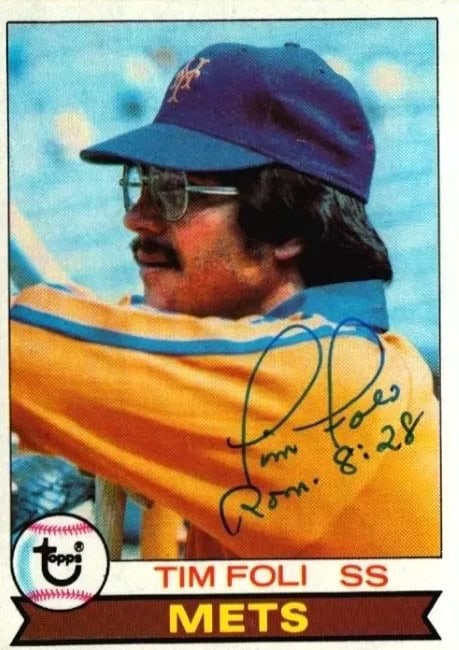
Untrusted or untested pens can lead to significant problems, such as ink fading, smearing, and inconsistent performance. Many markers, especially those not specifically designed for use on glossy or non-porous surfaces, may contain ink that does not adhere well or dries too slowly, resulting in smudges and smears that can compromise the autograph’s appearance.
Fading is another major concern. Pens with low-quality or non-archival ink can lose their vibrancy over time, diminishing the legibility and aesthetic appeal of the signature. Additionally, untested markers may contain chemicals or solvents that could interact poorly with the card’s surface, potentially causing damage or discoloration. To ensure the longevity and quality of an autograph, it’s best to use markers and pens that are well-tested industry standards, such as Sharpies, Staedtler, or Posca paint pens.
Prepping Baseball Cards for Autographs
For more than 100 years, baseball cards didn’t change very much. Baseball card printing techniques varied, but they were basically pieces of cardboard with ink applied. However, the 1990s gave way to new types of cards, with high-gloss surfaces, foil and refractors. There’s still cardboard underneath, but the rest of it is far more complicated.
Because of these different surfaces, collectors prep baseball cards from the 1990s onward, to receive an autograph. This process involves a very gentle scuffing of the surface of the card. Invisible to the naked eye, it creates just enough roughness on the surface that the ink from a pen will adhere better.
What Can Happen If a Card Isn’t Prepped?

Collectors prep their baseball cards for autographs because they need to create a surface that will allow the ink to adhere to it. Unprepped cards, especially from the modern era, are prone to:
Bubbling – The autograph will have holes and spacing in the signature, like bubbles that have popped
Smearing – While you should always let the ink dry on newly autographed baseball cards, it may take much longer if the card hasn’t been prepped, causing smearing.
Ghosting – The signature may not adhere at all, leaving just a “ghost” signature
How to Prep Baseball Cards
Disclaimer
The following techniques are commonly shared among autograph collectors. However, choosing to alter a card in any way, including the surface layer, may damage or affect the grade of the card. Proceed at your own risk.
Buy Test Cards
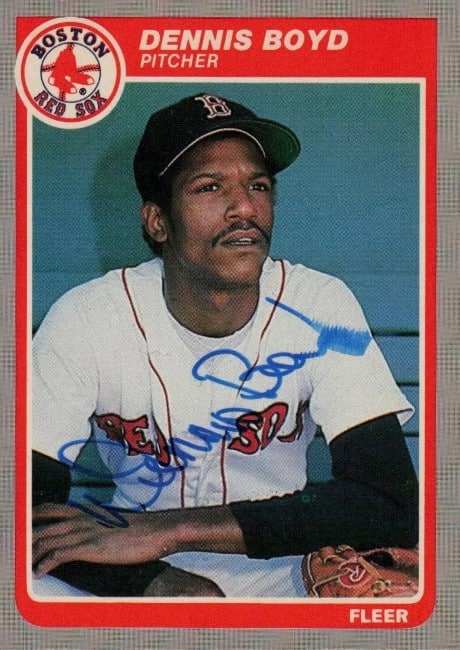
The easiest way to prep baseball cards for signatures is to buy test cards. That means buying commons from the same set that you want to get signed, so you can see how various inks and prep methods will affect the card. High-gloss cards like chromes and refractors will have different needs compared to a low-gloss card from the 1970s.
However, don’t assume that a lack of gloss means a card doesn’t need to be prepped. Cards may have residual dirt or oils that will react to ink in surprising ways. It’s best to hone your technique on commons before you unleash it on an expensive rookie card.
Baby Powder / Talc Powder
Yes, baby powder! This is by far the most common method collectors use to prep baseball cards. It involves putting a small amount of baby powder (less than the size of a dime) on the surface of the card, and gently rubbing it in small circles. After 30-60 seconds (depending on how glossy the card is), wipe off the excess talcum powder with a cloth. You won’t see a difference but the card is now prepped.
Here’s an experiment: Take one of your test cards and apply talcum powder to half of the card. Then, test a Sharpie on both sides. If the prepped side looks good but the non-prepped side doesn’t, the technique worked. If they look the same, you probably don’t need to prep cards from this set.
Art Eraser
The second most common technique for card prepping is using an art eraser. This is a soft white eraser you can buy at any hobby store or art supply store. As with the baby powder technique, gently rub the eraser over the surface of the card for 30-60 seconds. When you’re done, wipe off any eraser residue. You shouldn’t see a difference, but the prepping is done.
Conclusion
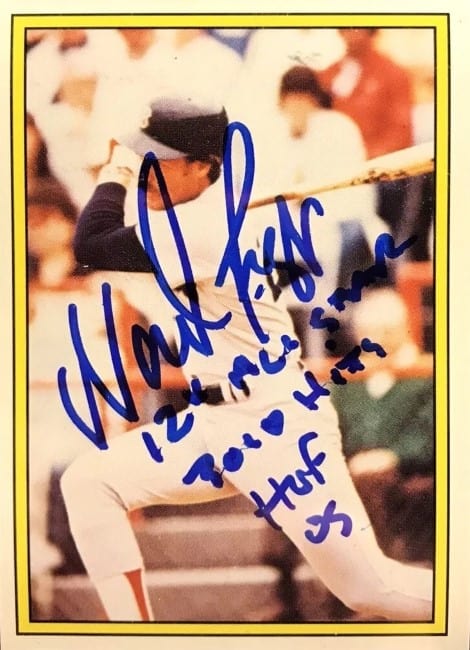
Every autograph collector you meet will have their favorite pens, prep techniques and ways of displaying their collection. The choices you make can greatly impact both its appearance and value of your autographed baseball cards. By carefully choosing a card with ample space, prepping the card, and using high-quality pens designed for autographing, you ensure that your autographed baseball cards not only look impressive but also stand the test of time. Whether you’re aiming to enhance your personal collection or prepare a card for resale, these considerations will help you achieve a professional, long-lasting result that highlights the significance of the signed memorabilia.
Taking the time to follow these best practices can make a substantial difference in the quality of the final product, ensuring that each autograph you acquire or create is a valuable and cherished addition to your collection. By understanding and applying these principles, you can preserve the integrity of the autograph and enhance the overall appeal of your baseball cards.
